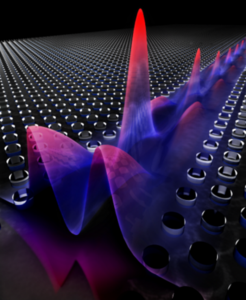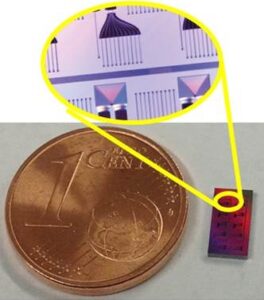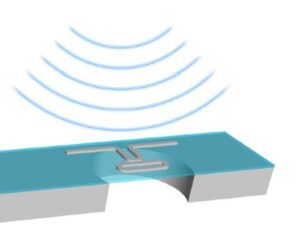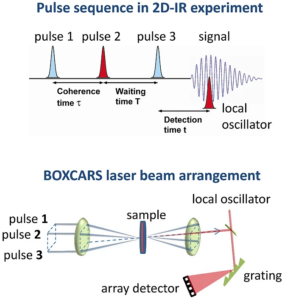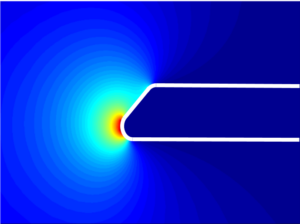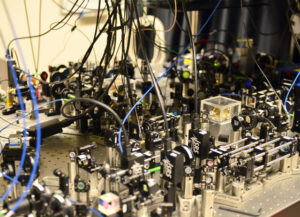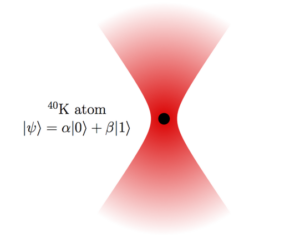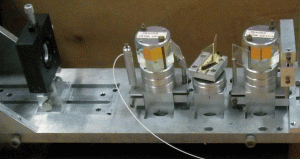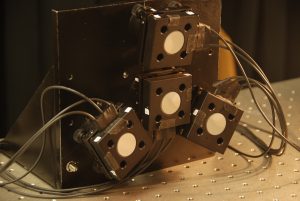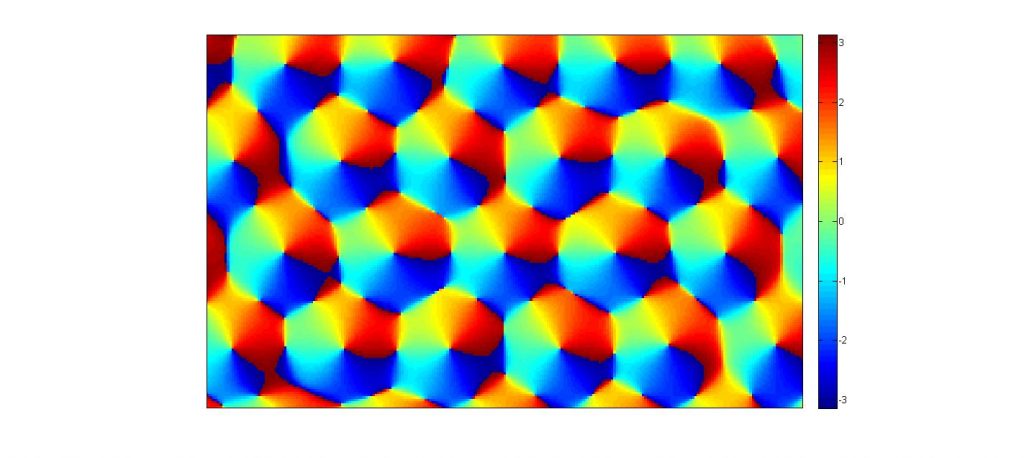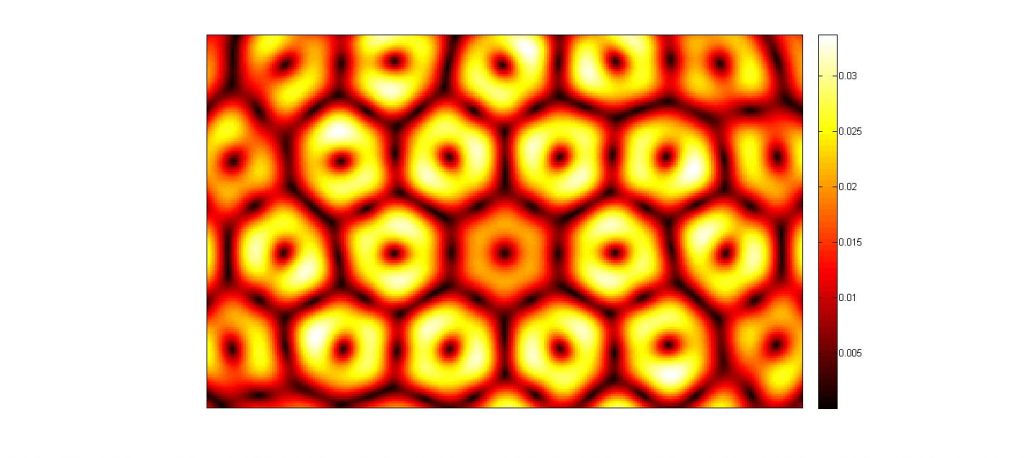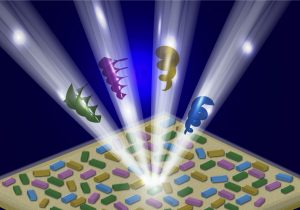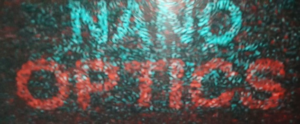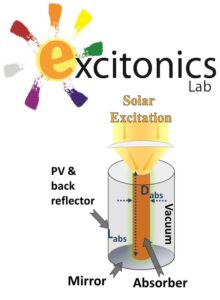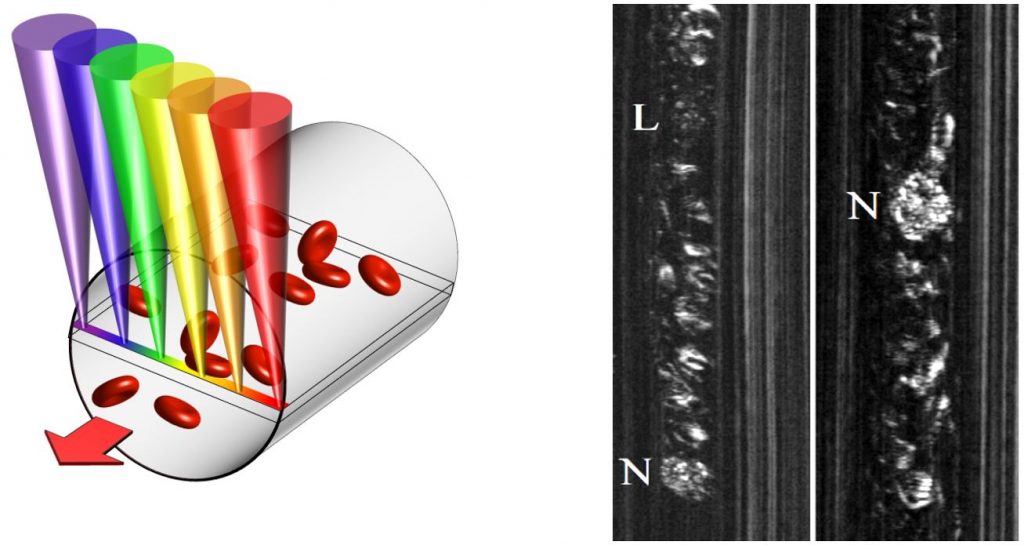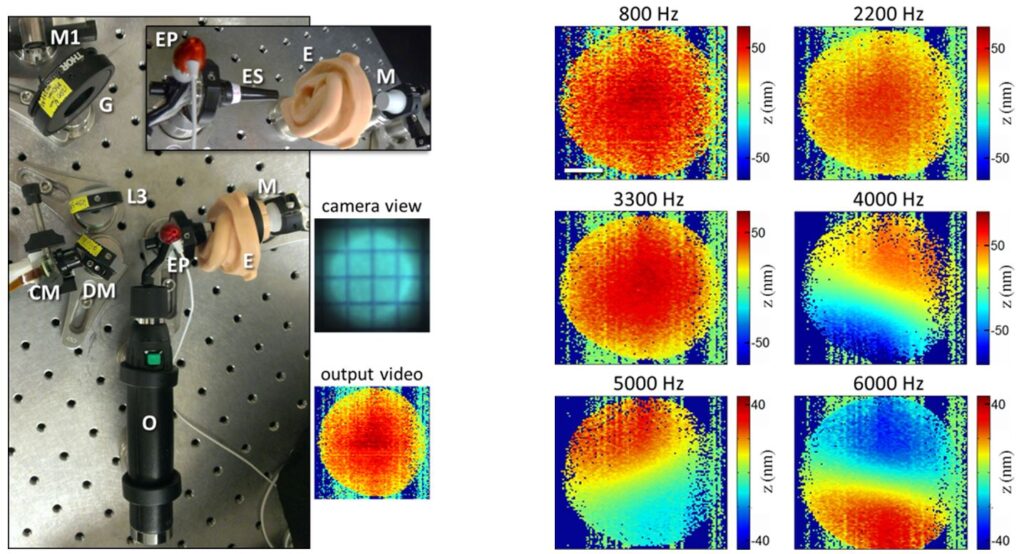Optics is a field and specialty with a profound record which cannot be more relevant than today. From optical communication to imaging, specialist in optics are desired everywhere. Here, we introduce an inter-faculty platform to share and select projects in a variety of optical fields such as non-linear optics, plasmonics, quantum dot lasers, optomechanics, optofluidics and biological imaging. We highly encourage students to choose their favorite projects from this list and contact the relevant supervisor.
| Prof. Oren Cohen | Ultrahigh speed high-resolution microscopy
Deep FROG |
| Prof. Amir Rosental | Opto-mechanical design of silicon-based interferometric sensors for ultrasound |
| Prof. Moti Segev
|
Guage fields in 2D photonic momentum lattices
Physics of interfaces from artificial gauge fields for light Physical phenomena in synthetic spaces Artificial gauge fields and surface plasmons |
| Prof. Lev Chuntonov | Design of plasmonic nano antennas array for ultrafast vibrational spectroscopy |
| Prof. Yoav Sagi
|
Building an optical system for laser cooling atoms
Non-adiabatic high fidelity transfer of atoms trapped in an optical trap |
| Prof. Erez Ribak
|
Search for life on remote planets
Segmented space telescope Improving the optical resolution by quantum means |
| Prof. Guy Bartal | Quasi-periodic optical vortex lattice |
| Prof. Erez Hasman | Multifunctional dielectric metasurface for coding/decoding and sensing of light |
| Prof. Yoav Shechtman | Efficient multicolor phase masks |
| Prof. Carmel Rotschild | Model and experiment on distribution of temperature and chemical potential
of radiation in photo luminescence material under solar illumination |
| Prof. Ido Kaminer | Achieving lasing without any gain by pumping with free electrons
Optical nonlinearities by massless charge carriers Designing New Artificial Atoms by Manipulating Laser Pulses |
| Prof. Dvir Yelin | Image-based classification of white blood cells in human patients
Doppler imaging of tissue vibrations |
Ultrahigh speed high-resolution microscopy |
| Supervisor: Prof. Oren Cohen and PhD student Oren Lahav |
| Project Description:
We develop a revolutionary approach for ultrahigh-speed high-resolution microscopy. We invite excellent and highly motivated undergraduate students to join this research direction. Experimental and/or algorithmic projects are available. |
| Requirements: optics or Introduction to digital signal processing |
| Faculty: Physics |
Deep FROG |
| Supervisor: Prof. Oren Cohen, Prof. Moti Segev, Prof. Shei Manor, Alex Dikopoltsev and Tom Zahavy |
| Project Description:
Frequency Resolved Optical Gating (FROG) is the most widespread method for ultrafast pulse measurement. Due to the bandwidth limit of photodetectors, we take an indirect measurement of the pulse , and retrieve the original pulse using a reconstruction algorithm. Among these algorithms, SVD FROG is the most common one, but it needs a full spectrogram and suffers from restrictions on the number of measurements. However, a more liberal algorithm recently applied, Ptychography FROG takes any partial measurements as long as they contain high SNR. These methods are able to reconstruct ultrafast pulses, but they all suffer from severe time consumption (tens of seconds), without having the ability to reconstruct the pulse on the fly (fractures of a second). We propose using deep neural network algorithms to reconstruct ultrashort pulses from FROG measurements, without losing any of the advantages above while increasing time performance to a video applicable level. This project aims to become an avant-garde step of deep neural network implementation in photonics.
|
| Requirements: Affinity to Optics and Machine learning |
| Faculty: Physics/EE |
Opto-mechanical design of silicon-based interferometric sensors for ultrasound |
||||
| Supervisor: Prof. Amir Rosenthal | ||||
| Project Description:
Description: Recent advances in optical interferometry has made it a promising technology for next-generation ultrasound detectors. In particular, photonic circuits fabricated in silicon can offer unprecedented levels of miniaturization and sensitivity. One of the promising approaches for sensitivity enhancement is the use of membranes. While membranes play a vital role in acoustic sensing of microelectromechanical systems (MEMS), their potential for increasing the sensitivity of optical sensing systems has yet been fully explored. The project will focus on opto-mechanical analysis of various combinations of membranes and photonic structures with the aim of optimizing sensitivity and acoustic bandwidth.
|
||||
| Requirements: basic background in optical waveguides is mandatory, basic background in stain-stress analysis is a plus | ||||
| Faculty: Electrical Engineering |
Gauge fields in 2D photonic momentum lattices |
| Supervisor: Prof. Moti Segev and Alex Dikopoltsev |
| Project Description:
The study of waves in periodic lattices is more than 100 years old, however, only recently, researchers started studying these lattices in dimensions that are not only space. These “Synthetic” dimensions provide new physics and pave the wave to new devices, such as the topological bulk lasers, which is a laser array with robust coherence (e.g. laser weapons). In this project, the student will study the nature of light’s momentum in photonic crystals (through BPM simulations) and develop a Gauge field in 2D momentum space (using Solid State tools) to control the flow of light. |
| Requirements: Introduction to Solid State, Optics |
| Faculty: Physics |
Physics of interfaces from artificial gauge fields for light |
| Supervisor: Prof. Moti Segev and Moshe-Ishay Cohen |
| Project Description:
Photons, being neutral particles are insensitive to electric and magnetic field. We modulate our system, such that the light in it will feel a coordinate dependent EM field artificially. Paving the way to have a better control on the flow of light, which is crucial for photonic based future technologies (such as computers based on light and not on electricity).
|
| Requirements: introduction to solid state physics |
| Faculty: Physics |
Physical phenomena in synthetic spaces |
| Supervisor: Prof. Moti Segev and Eran Lustig |
| Project Description:
Time dependent classical and quantum optical systems can produce a variety of unexplored new physical phenomena, and are predicted to be a key element in photonic based future technologies (such as computers based on light and not on electricity).
in this project we modulate a system in time (with external fields for example), to produce physical effects in a different basis than the spacial x-y basis. When these effects happen in an exotic basis, new phenomena of light is expected to be observed. These systems can also be experimentally demonstrated, using waveguide arrays and other systems.
|
| Requirements: solid state physics (advantage) |
| Faculty: Physics |
Artificial gauge fields and surface plasmons |
| Supervisor: Prof. Moti Segev and Radoslaw Kolkowski |
| Project Description:
Time dependent classical and quantum optical systems can produce a variety of unexplored new physical phenomena, and are predicted to be a key element in photonic based future technologies (such as computers based on light and not on electricity).
in this project we modulate a system in time (with external fields for example), to produce physical effects in a different basis than the spacial x-y basis. When these effects happen in an exotic basis, new phenomena of light is expected to be observed. These systems can also be experimentally demonstrated, using waveguide arrays and other systems.
|
| Requirements: optical anisotropy, surface plasmons |
| Faculty: Physics |
Design of plasmonic nano antennas array for ultrafast vibrational spectroscopy |
||
| Supervisor: Prof. Lev Chuntonov and Bar Cohn | ||
| Project Description:
Two-dimensional infrared femtosecond spectroscopy (2DIR), performed with sequences of four femtosecond laser pulses, is a powerful tool for studies of molecular structure and its ultrafast dynamics. We are interested in dynamics of molecules confined to surfaces, gaps and other topographic features frequently encountered in nano-devices. Confinement can alter the chemical and physical properties of molecules. The corresponding measurements are challenging because the signals from optically-thin samples are very weak. By using plasmonic nanostructures we enhance the electric field locally and strongly amplify spectroscopic signals of nearby molecules, thus, permitting these measurements.
|
||
| Requirements: optics | ||
| Faculty: Solid State Institute and Chemistry |
Building an optical system for laser cooling atoms |
| Supervisor: Prof. Yoav Sagi |
| Project Description:
In this experimental project the student will engage in building a laser system meant to be used for laser cooling atoms. Laser cooling is used as the first stage towards achieving a quantum degenerate gas in our lab. The project will involve building the laser system and a spectroscopic setup that enables locking the frequency of the laser relative to an atomic transition. More information on the group in the following link: http://phsites.technion.ac.il/sagi/
|
| Requirements: optics, and a knowledge of atom-photon interactions is an advantage |
| Faculty: Physics |
Non-adiabatic high fidelity transfer of atoms trapped in an optical trap |
| Supervisor: Prof. Yoav Sagi |
| Project Description:
In my group we are developing a new scheme for quantum computation based on neutral atoms trapped in an optical trap (also known as optical tweezers). As part of the scheme, we need to move the atoms from on e place to another by changing position of the tweezers. We want this to be done as fast as possible, and the question is how to design the trajectory such that the final vibrational state of the atom in the optical trap will not change from its initial state. This project is mainly a theory one but in principle can be expanded also to be an experiment in our setup. More information on the group in the following link: http://phsites.technion.ac.il/sagi/
|
| Requirements: optics and quantum mechanics |
| Faculty: Physics |
Search for life on remote planets |
| Supervisor: Prof. Erez Ribak |
| Project Description:
Life on remote planets outside the solar system is characterised by complex molecules such as chlorophyll. The spectral lines of these molecules are significantly different from their local sun – they are much narrower because of the low planet temperature, and appear in the infra-red. We are developing a special spectrometer to identify these lines, which can also be used for other purposes, such as identifying greenhouse gases in our atmosphere, e.g. carbon dioxide, methane, and more. The spectrometer is to be installed in a satellite and hence its optical and mechanical requirements are different from a lab instrument. A first model was built (in the visible regime, see picture) and was successfully operated in the Mitzpe Ramon Observatory. This Fourier Transform Spectrometer has the characteristic that it allows measuring spectral lines of specific width, while reducing out-of-band lines (a narrow-band detector). The research consists of designing and building the device, including the optics, infra-red detectors, control computer, and more. The next stage is to propose a method for accurate calibration. Finally, to test this device, make measurements, and compare them to known results.
|
| Requirements: optics, Fourier methods |
| Faculty: Physics |
Segmented space telescope |
| Supervisor: Prof. Erez Ribak |
| Project Description:
When deploying a telescope is space, we run into opposite requirements: on the one hand the launcher is limited in mass and volume, but on the other hand, for light collection and resolution, we need a large aperture of larger mass. The solution of segmenting the aperture has many benefits: the total mass and volume of the separate segments is smaller, and it also allows their folding, and deployment after launch. The following step is to place the segments in their positions, accurate to a fraction of the wave length. This we do with a method borrowed from solid-on-solid models in crystals, namely simulated annealing: we reduce the energy of the system by sharpening the image of the star in a stochastic search in hardware, by moving the segments and improving the image. The research involves constructing the telescope from segments, then setting up a feedback from the telescope camera to the actuators moving the segments. In the lab we use a compact point source to simulate a star. The challenge is to find a fast and efficient method to find the best (out of many) solutions to the segment locations. Since the segments are sparse and do not fill the aperture (see picture of previous telescope) we need to find a way to fill in the gaps in the data to achieve a high quality image.
|
| Requirements: optics, statistical physics, or alternatively control methods |
| Faculty: Physics |
Improving the optical resolution by quantum means |
| Supervisor: Prof. Erez Ribak |
| Project Description:
One of the methods to arrive at the uncertainty principle is by optics: knowledge of the position where a single photon crossed the optical aperture, and knowledge of the angle at which it crossed it, depend on each other. Better accuracy in one of them reduces the accuracy in the other. But this principle is defined such that in each wave packet in the visible regime there is only one photon. If we could increase the number of identical photons in the wave packet, we will be more precise in the location of the focus, namely we will improve the optical resolution. Thus if we amplify stellar light, we could obtain from a five meter telescope the same resolution as of a ten meter one. Of course we have to pay for that, and the payment is in the sensitivity: we need more stellar photons (in the astronomical example) to get over the noise produced during the amplification process. This noise arises for example during the gain process, and is called spontaneous emission, as opposed to the stimulated emission generated by the astronomical photon. Initial calculations show that there exists a chance to improve the resolution by quantum methods, and we wish to try them in the laboratory. Some of these methods employ quantum non-demolition measurements, where we can tell when the photon has crossed the aperture, in order to distinguish it later from spontaneous noise. In the research we will build a coherent photon amplifier, such as a laser gain medium. We will employ photons emulating astronomical sources, and study different methods of signal amplification and non-demolition measurement. The final test will be to indeed increase the optical resolution.
|
| Requirements: optics, quantum physics, lasers |
| Faculty: Physics |
Quasi-periodic optical vortex lattice |
||
| Supervisor: Prof. Guy Bartal and Shai Tsesses | ||
| Project Description:
Optical vortices are created by a screw-shaped phase pattern, situated around a phase singularity. optical vortices carry angular momentum, and have significant contributions in the fields of optical trapping, super-resolution microscopy and communications. Our lab uses specially fabricated samples to couple light into a structure, where optical vortices are created in a 2D scheme. Recently, we demonstrated the ability to create an array of such vortices, and are interested in exploring the limits of this method.
Students will learn about exciting new ways to control light in the nano scale, with the goal of demonstrating (or refuting) the capability to create quasi-periodic vortex arrays theoretically (and afterwards, taking part in an experiment).
|
||
| Requirements: optics or any basic course in electromagnetic waves | ||
| Faculty: Electrical Engineering |
Multifunctional dielectric metasurface for coding/decoding and sensing of light |
| Supervisor: Prof. Erez Hasman |
| Project Description:
Photonic metasurfaces are metamaterials with reduced dimensionality composed of engineered subwavelength-scale meta-atoms enabling a custom-tailored electromagnetic response of the medium. Geometric phase based on Pancharatnam-Berry phase is a promising approach for achieving an abrupt phase change by space-variant polarization manipulations, leveraging the design of gradient metasurfaces. Over the last few years, we developed helicity (photon spin) dependent wavefront shaping based on geometric-phase metasurfaces (GPMs). Recently, we incorporated the geometric phase mechanism into shared-aperture metasurfaces using a novel technique to obtain photonic spin-controlled multifunctional gap-plasmon metasurfaces operating at reflection mode. We propose to extend our study of planar optics into multifunctional dielectric shared-aperture metasurfaces to achieve multi-mode and multi-tasking spin-controlled GPMs operating at the visible to near IR spectrum and in transmission mode. The research will be conducted for optical mode shaping as well as for mode detection and characterization of the fundamental properties of light, including the phase, amplitude, wavelength, angular momenta and polarization state. We will study multitasking metasurfaces based on interleaving approach. Shared-aperture interleaved metasurfaces are formed by random interspersing of sub-arrays, each associated with a specific phase function, sparsely sampled at randomly chosen lattice points. This results in a device with high flexibility in multifunctional wavefront generation and the angular resolution of the shared-aperture. The successful realization of these research objectives is expected to provide a new platform and new set of tools for developing ultrathin, planar optical elements for sophisticated beam shaping, and multitasking photonic devices. The use of two dimensional Si-based GPMs is highly advantageous since the efficiency, compactness and compatibility are key features of any proposed technology. The shared-aperture GPM paves the way for multimodal real-time on-chip detection devices, for multi-parameter light characterization and manipulation of light-matter interactions. The ability to encode, decode and measure the fundamental properties of light may find applications in target acquisition and identification, chemical inspection, multispectral-channel combination, communication, laser technology and quantum information processing.
|
| Requirements: optics |
| Faculty: Mechanical Engineering |
Efficient multicolor phase masks |
| Supervisor: Prof. Yoav Shechtman |
| Project Description:
Our lab develops microscopy & signal processing methods for super-resolution 3D nano-scale imaging, motivated by biological applications. In this project we are seeking optimally phtoton-efficient ways to encode color by wavefront modulation (here using a liquid crystal spatial-light-modulator).
|
| Requirements: Optics & Introduction to digital signal processing |
| Faculty: Biomedical Engineering |
Model and experiment on distribution of temperature and chemical potential of radiation in photo luminescence material under solar illumination |
| Supervisor: Prof. Carmel Rotschild |
| Project Description:
Efficient and low cost harnessing of solar power for electricity is paramount to the clean energy future we all strive for. The basic single-junction photovoltaic (PV) cells are limited in conversion efficiency, mainly due to heat dissipation accompanying absorption of energetic photons, up to the 32% Shockley-Queisser (SQ) limit. Concepts that aim to harness this heat loss, such as solar thermo-photovoltaics (STPV), haven’t yet overcome this limitation. The novel concept of Thermally Enhanced Photoluminescence (TEPL) can potentially fill this gap. Ideally, a thermally insulated photo-luminescent absorber, acting as a mediator between a photovoltaic cell and the sun, promotes PV conversion efficiencies more than 62% while operating at temperatures lower than 1300K. This is achieved by blue-shifted emission of absorbed sunlight, resulting from operation at high temperatures, and coupling to a high band gap PV cell. Moreover, when examining practical working parameters, such as achievable solar concentration and limited thermal insulation, conversion efficiencies of over 45% are at hand; putting this technology at an advantage in relation to current STPV concepts. We are is search for students, wishing to learn more about the fields of optics, heat transfer, photo-voltaics and/or thermodynamics of light, to participate in the birth of this novel concept. Projects may range from designing and constructing numerical simulations to performing live experiments.
|
| Requirements: Optics |
| Faculty: Mechanical Engineering |
Optical nonlinearities by massless charge carriers |
| Supervisor: Prof. Ido Kaminer and Yaniv Kurman |
| Project Description:
Graphene is a 2D lattice of carbon atoms that exhibits extreme physical properties like for example massless charge carriers. The project will explore how basic light-matter interactions are changing when occurring inside 2D materials like graphene. The student will do theoretical work on how non-linear effects of frequency conversion emerge from the Compton effect between electrons photons and plasmons.
|
| Requirements: Electromagnetism and Electrodynamics or EM fields; Quantum Physics 2 (Recommended courses are intro to Solid State Physics and/or Semiconductors) |
| Faculty: Electrical Engineering |
Achieving lasing without any gain by pumping with free electrons |
| Supervisor: Prof. Ido Kaminer and Ori Reinhardt |
| Project Description:
Electron energy loss spectroscopy is one of the most accurate techniques to study light-matter interactions between electrons and nano materials. The Technion has a Themis electron microscope that stands in the frontier of this field in the world. We would like to develop the theory, new experiments and new applications that emerge from placing a laser cavity inside the microscope and studying its extreme interaction with electrons. |
| Requirements: Waves and distributed systems and/or Waves and/or Electromagnetism and Electrodynamics (Recommended courses are Physics of Lasers or Electro-optics 1) |
| Faculty: Electrical Engineering |
Designing New Artificial Atoms by Manipulating Laser Pulses |
| Supervisor: Prof. Ido Kaminer and Ori Reinhardt |
| Project Description:
New breakthroughs in physics now enable us to shape the quantum wavefunction of electrons. The goal of this project is to design new artificial atoms by using specially designed laser beams that confine electrons into novel bound states, allowing us to control their quantized energy levels. Furthermore, by shaping the electron wavefunction we can cause these atoms to have properties that are impossible with conventional atoms. For example, to create energy levels at the extreme UV and X-ray frequencies. The new atoms will enable the development of novel radiation sources which cannot be implemented using conventional techniques. |
| Requirements: Electromagnetism and Electrodynamics or EM fields; Quantum Physics 2 |
| Faculty: Electrical Engineering |
Image-based classification of white blood cells in human patients |
| Supervisor: Prof. Dvir Yelin |
| Project Description:
White blood cells (WBC) analysis is an important part of any blood test, providing direct indication of the patient’s immune system. Differentiating between WBC types at the point of care would assist in accurate diagnosis of a possible source of infection (viral or bacterial) and in effective prescription of antibiotics. We use a novel technique termed spectrally encoded flow cytometry (SEFC) for noninvasive microscopy of blood cells while in flow. The proposed project involves the detection of WBC’s and their classification based on their appearance in the SEFC and widefield images.
|
| Requirements: optics |
| Faculty: Biomedical Engineering |
Doppler imaging of tissue vibrations |
| Supervisor: Prof. Dvir Yelin |
| Project Description:
Our group has recently developed a novel optical system for imaging acoustic vibrations of a membrane. The system can measure nanometric vibration amplitudes by using spectral encoding and interferometry, accompanied by sophisticated data processing for extracting phase information in 3D. The proposed project involves the development of a robust data processing algorithm for efficient, artifact-free computation of the vibration modes of a variety of targets, including skin, superficial scars, and the tympanic membrane.
|
| Requirements: optics |
| Faculty: Biomedical Engineering |



